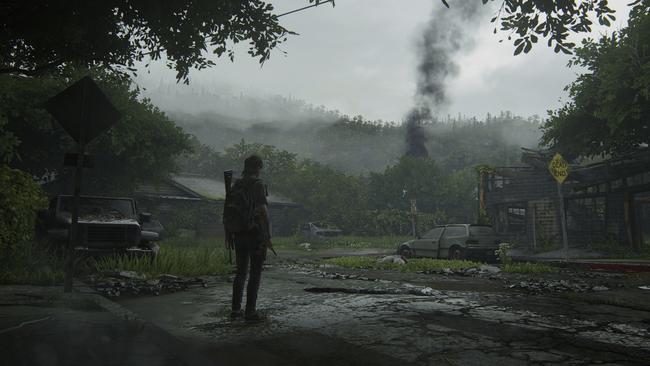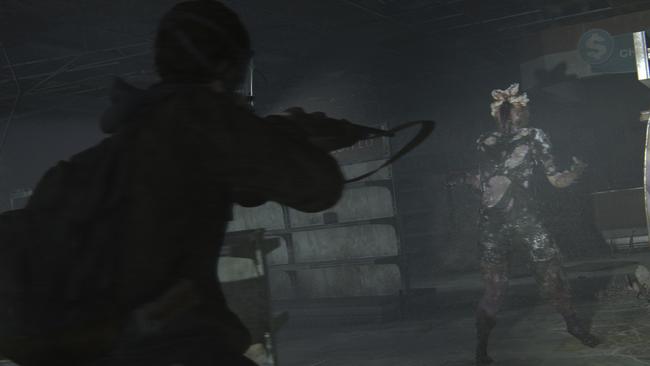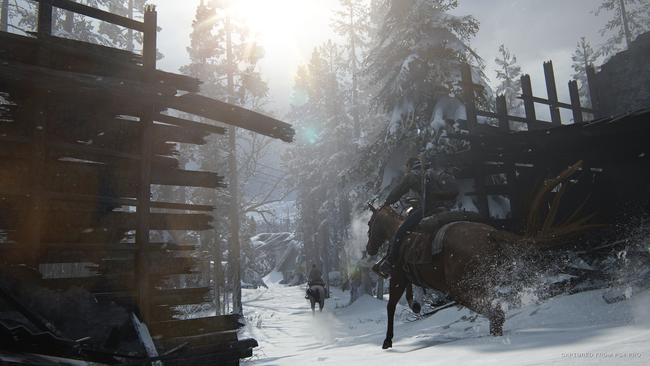Why developers created ‘The Last of Us’ sequel
Fans cried out for a follow-up to the popular and compelling game ‘The Last of Us’ since it was first released, and after initially shutting down the idea of a sequel, this is why Naughty Dog released another game.

Gaming
Don't miss out on the headlines from Gaming. Followed categories will be added to My News.
When the team at Naughty Dog released The Last Of Us, they were convinced that they had made a standalone game. After years of releasing instalments in the Uncharted franchise, this was their self-contained story.
Movies were pitched and then shelved, fans cried out for a sequel, but the developers were adamant they had told all the tale they wanted to tell in that world.
Then the writing team had another idea, and the sequel was on.
For game director Kurt Margenau, it was important that people understood they hadn’t gone into a sequel lightly.
“We feel like we have a compelling story to tell and we want to tell it. There’s a lot about these characters that has yet to be explored,” he says. “This game is about exploring what would someone do to see justice. This is a really different avenue for us, and we’re excited to delve into that sub-genre.”
Exploring what a character would do to seek justice isn’t a new concept in video games. Describing a game as “the one where the man’s wife/girlfriend and/or child is killed, putting him on a violent path of vengeance” is like trying to describe a sitcom by saying “the one where a group of friends hang out in an apartment” – it’s too common a situation to really narrow it down.

But telling that story with a teenage girl in a post-apocalyptic wasteland is what interested Margenau and the team. It’s about “that feeling of wanting justice, really badly and what that would cost, or what are you at risk of losing?” he explains. “It’s just a meditation on the cycle of violence and what people will do in a world where there’s no law and order, there’s no imposed structure, and your emotions can actually take you farther than it would in today’s world.”
The start of the preview saw Ellie on patrols with her best friend and crush, Dina, while the last half showed her solo and on the warpath. Assuming Dina doesn’t live a long and happy life is more of a step to conclusions than a leap, but Margenau was quick to deflect any questions about Dina’s involvement in the rest of the story by talking about who Ellie is when she’s solo, and their intentions before making the DLC for the first game.
“I think she is the most compelling character for a lot of us in the first game. We’ve said in the past that The Last Of Us part one is like a secret origin story for Ellie. That was always the intention that we would following Ellie in the future,” he says. “There’s just a lot more interesting storytelling that we can do with someone who’s in her teenage years, and dealing with awkward teenage romance, but also dealing with this brutal and violent world.”
Allies and relationships are what Naughty Dog are known for, and this game is no exception.
“We care as much about the relationship between the characters when we design a level as we do the level itself,” he says. “How that relationship changes is just as important as how the gameplay challenge changes. So, I won’t give any story details away. But I would say that we are passionate about allied characters in general.”

Although killing the girlfriend is a tried and true trope for action stories, it has a different significance when utilised on a queer female character.
The history of the “bury your gays” trope goes back to Victoria-era Great Britain, when it was illegal to engage in or promote “perverse acts”, which many authors took to mean that you could kind of have queer characters, as long as they weren’t happy/alive. This was then reinforced during the era of the Motion Picture Production Code in Hollywood. Since then, queer characters just seem to die at a higher rate than straight ones.
MORE: APPLE ARCADE ENTERS GAMING SUBSCRIPTION MARKET
CONTROL ISN’T GAME OF THE YEAR, BUT IS WORTH CELEBRATING
THE GAME YOU HAVE TO PLAY EVEN IF YOU’RE NOT A GAMER
According to Autostraddle, 383 queer female characters appeared on American television between 1976-2016, and 31 per cent of them ended up dead, while only 10 per cent lived to have their stories end happily when the show finished.
That was something Margenau was conscious of when working on the game.
“We are aware of a lot of tropes in games, and storytelling in general. But it goes back to the story that we’re telling, and we just have to commit to what we think we’re passionate about, and everything builds off of that,” he said, cryptically, still unwilling to give away whether Dina survived. “We have a wide range of opinions at the office, and it’s a big and diverse studio. We always take that into account to make sure that the story we’re telling is as effective as it can be, without any unnecessary distractions. I think we try to stay open to that, and we’re proud of the story, we’re telling.”
GAME REVIEW
Available: Feb 21 2020 on PS4
Price: TBC
Previewed on: PS4 Pro
The original Last Of Us was very comfortably the best PS3 exclusive game, full stop. While you try to go into any game preview with blank expectations, it’s hard not to build up a sequel like this.
Thankfully, The Last Of Us 2 looks and plays amazingly, or at least it did for the few hours I spent with it.
The demo was split into two halves: one from near the start of the game where Ellie is enjoying all the highs and lows of crushing on your possibly straight best friend. The second was from further in the game where Ellie is alone and seeking vengeance for an unknown grave injustice (but we can all guess what that is).
The first half of the demo felt so spectacularly real. Her obliviousness about the signals Dina was sending, and her awkwardness took me right back to my high school days (which, admittedly, had 100 per cent fewer zombies).

The writing and acting was so spot on that I didn’t mind that it was mostly just riding horses around a frozen forest. When we came upon the infected, though, that’s when the jump scares and terror set in. It was so perfectly paced, and the difficulty was at that Goldilocks level where I died multiple times and felt like each gain was an achievement, but not so high that trying felt futile.
The scene at the end of the first half where Ellie and Dina acknowledged their feelings was a scene I never thought I’d see in a AAA game, and I must admit I got a little emotional. The Last Of Us might be a series with a post apocalyptic world and zombies, but it’s primarily a game about characters and experiences that hit home, and that first part perfectly exemplified that.
The second half was more business as usual. Ellie was alone, and I instantly missed seeing her interact with a trusted partner, be it Joel from the first game, or Dina from the first half. The fighting here was against human soldiers, and was a bit more repetitive. Though, shooting the dogs made me feel like a monster every time because the animations were so lifelike.
Bottom line: At the end of the demo, I was emotionally drained, and desperate to play the rest of the game. February can’t come soon enough.
The Last Of Us Part 2 is available for PS4 on February 21, 2020.
ALICE CLARKE TRAVELLED TO CALIFORNIA AS A GUEST OF PLAYSTATION.
